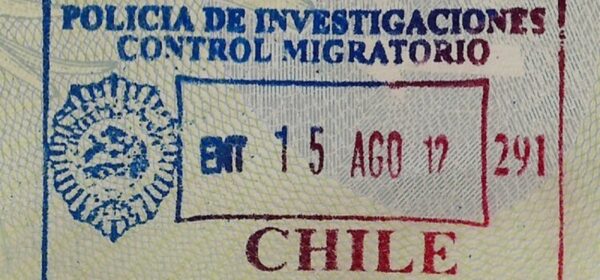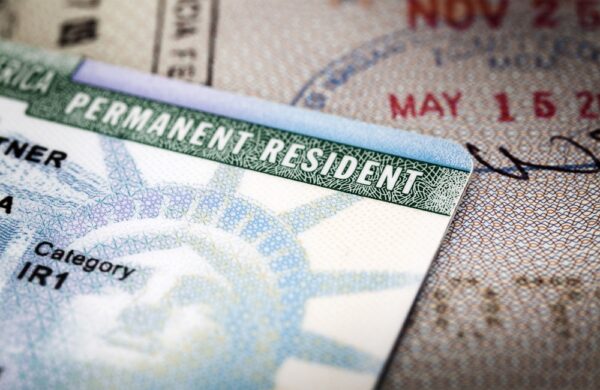Traveling to the United States is among the most queried immigration issues. The country is renowned for its commitment to friendly immigration policies worldwide. As of 2018, an estimated 23% of United States citizens had at one time been foreign nationals. While the United States has favorable immigration policies, it also has stringent immigration visa types. These visas can range from tourist visas to paid work visas. It is important to understand these visa types before applying for immigration to the United States.
There are numerous reasons to immigrate to the US. A thriving, investment-friendly economy, rewarding job and business opportunities, and access to high-quality education and healthcare are just a few of the manifold social benefits to be enjoyed.
Categories of US Visas
United States immigration visas are broadly classified into two main categories: immigrant and nonimmigrant.
Immigrant visas are legal travel documents given to those intending to live permanently in the US, while nonimmigrant visas are given to those traveling for a temporary stay. Immigrant visas allow individuals to permanently reside in the United States, typically leading to a green card. The nonimmigrant visa category is for individuals temporarily visiting the US for tourism, work, or study.
Understanding these categories' differences is essential because several complications can arise if the incorrect category is applied. People often leave these distinctions to their travel agents without knowing which of the US immigration visa types is being used. Also, immigrant visas cost more than nonimmigrant visas due to the extended processing and documentation requirements of gaining permanent residency.

Immigrant Visa Types
There are several types of Immigrant Visas available to those seeking permanent residency. They include:
Family-Based Immigrant Visas
These are visas granted on consideration of an applicant's close or nuclear familial relationship to a documented/law-abiding US Citizen. Family-Based Immigrant Visas are popular amongst individuals seeking to reunite with close family members. They allow immigrants to establish a stable support system as they adapt to a new country. These visas can be:
1. IR Visas (Immediate Relative): For close family members of US citizens.
- IR-1: Spouse of a US citizen
- IR-2: Unmarried child (under 21) of a US citizen
- IR-3: Orphan adopted abroad by a US citizen
- IR-4: Orphan to be adopted in the US by a US citizen
- IR-5: Parent of a US citizen (over 21)
2. F Visas (Family Preference): For extended family members.
- F-1: Unmarried sons and daughters of US citizens (over 21)
- F-2A: Spouses and children of lawful permanent residents
- F-2B: Unmarried adult children of lawful permanent residents
- F-3: Married sons and daughters of US citizens
- F-4: Siblings of US citizens (citizen must be over 21).
Family-based immigrant Visas usually cost around $325 for the application fee plus a $120 affidavit of support fee. Additional costs can arise for medical exams, document translation, and legal assistance if required.
Employment-Based Immigrant Visas (EB Visas)
Employment-Based Immigrant Visas are a US immigration visa type for permanent workers in the United States. These visas are based on an applicant's employment status with a recognized organization in the United States. Employment-Based Immigrant Visas are popular among skilled professionals and entrepreneurs. These visas represent a chance to leverage their expertise in a global market, access world-class resources, and contribute to pioneering work in their fields. They can be divided into:
- EB-1: Priority workers with extraordinary abilities, outstanding professors/researchers, or multinational executives.
- EB-2: Professionals with advanced degrees or exceptional ability in arts, sciences, or business.
- EB-3: Skilled workers, professionals, and unskilled workers.
- EB-4: Special immigrants, including religious workers, retired employees of international organizations, etc.
- EB-5: Immigrant investors who are creating jobs through a substantial investment in the US economy.
Employment-Based Immigrant Visas are often costlier, with fees starting at $345 for the visa application alone. Some categories, like EB-5 (investor visas), involve significantly higher costs due to investment requirements and additional processing fees.
Diversity Immigrant Visa Program (DV)
This is also known as the Green Card Lottery. The program offers visas to individuals from countries with historically low immigration rates to the US. The Diversity Immigrant Visa program appeals to people from diverse backgrounds and offers a legally viable route to permanent residency. The program provides an opportunity to obtain immigration without the high financial or sponsorship barriers typical of other visa categories.
While the lottery is free, selected winners must pay approximately $330 for visa processing and additional fees for medical exams and supporting documents. The Diversity Visa Program primarily benefits nationals from underrepresented countries like Nigeria, Ukraine, Nepal, and Haiti.
Nonimmigrant Visa Types
Nonimmigrant visas are for individuals visiting the US for tourism, work, or study. They appeal to international students, professionals, and tourists who wish to experience the United States without committing to long-term residency. These types of visas include:
- Visitor Visas B-1 for business visitors and B-2 for tourism, medical treatment, or visiting family. $185 for the application fee, making it one of the more affordable nonimmigrant options.
- K Visas for fiancé(e)s and spouses of US citizens, K-1 for Fiancé(e) of a US citizen, and K-3 is for the spouse of a US citizen awaiting immigration visa approval.
- Work Visas H are for temporary workers, the H-1B visa is for specialty occupations (e.g., tech, engineering), the H-2A is for agricultural workers, the H-2B visa is for Non-agricultural seasonal workers, and the H-3 is for qualified Trainee workers. The application fee is typically around $190, though the sponsoring employer may incur additional processing costs.
- Student visas are F-1 for academic students, M-1 for vocational or technical students, and J-1 for exchange visitors (students, professors, and research scholars). The application fee is around $185, though students and exchange visitors may have to pay a SEVIS (Student and Exchange Visitor Information System) fee of around $350.
Differences between Some Similar US Immigration Visa Types
Some US immigration visa types are commonly mistaken because they fall under similar categories or names. Travelers need to know and understand what visas they are applying for and what the visas stipulate for their holders.
F-1 vs. J-1 Visa (Study and Exchange Visas)
An F-1 visa is standard for full-time students in degree programs. After graduation, it allows limited on-campus work and Optional Practical Training (OPT). The visa is usually issued for up to 5 years. Students on this visa typically have 60 days to leave the United States after completing their program.
The J-1 visa is granted to exchange visitors, including students, interns, and researchers. Educational or cultural exchange programs often sponsor these visas. Opt for F-1 if you're pursuing an entire academic program at academic institutions like the University of Houston or UC Berkeley. Choose J-1 for shorter exchange opportunities, like foreign internships or training programs.
B-1 vs. B-2 Visa (Visitor Visas)
A B-1 visa is for business visitors who attend meetings, conferences, or short-term training without engaging in actual employment. B-1 visa holders can negotiate contracts and consult with business associates but cannot perform paid work.
B-2 visas are designed for tourists, family visits, and recreational travel, with no work allowed. B-2 visa holders can enjoy sightseeing, visiting friends or family, or seeking medical treatment in the US. Use B-1 for business-related travel, such as meetings or negotiations. Use B-2 for leisure activities, family visits, or vacations.
Both visas are typically valid for six months but may be extended. Applicants must demonstrate ties to their home country to ensure they will return after their visit.
K-1 vs. K-3 Visa (Family Visas for Spouses)
K-1 visa is a fiancé(e) visa allowing a US citizen's fiancé(e) to enter the US for 90 days to get married. If the marriage occurs within 90 days, the fiancé(e) can apply for a green card.
A K-3 visa is for foreign spouses of US citizens, enabling entry while awaiting residency processing.
The K-3 helps reduce separation time while a green card is processed for the spouse abroad. Choose K-1 if you're engaged and intend to marry within 90 days of entry.
If you are already married and want to reunite in the US during the green card, wait and opt for K-3. Both visas are popular for reuniting with loved ones and offer different routes to residency.
B-2 vs. F-2 Visa (Family of Visitors vs. Family of Students)
B-2 visas are for tourists visiting the US for pleasure, family visits, or medical treatment.
The B-2 visa allows short stays, with extensions possible for medical reasons or unforeseen delays.
F-2 visas are for dependents (spouses and children) of the F-1 student visa holders, allowing them to stay in the US F-2 holders cannot work but may engage in recreational activities or study part-time.
Use B-2 for short-term travel, tourism, or family visits. Choose F-2 if you’re accompanying an F-1 student for the duration of their study program. Both visas serve different purposes but offer family members temporary stays in the US.
Applying For a US Immigration Visa
Different US Immigration Visa types have different application processes. Likewise, the type of visa you're applying for determines the method of the application process. Visa application forms are usually made available online. However, people with any impediment preventing them from using online can apply physically at their local US Embassy. Processing times vary, so plan to start early, especially for visas with quotas like the H-1B.
Family-Based Immigrant Visa Requirements
Immediate Relative (IR) visas and Family Preference visas share identical application processes and requirements. Both visa types allow US citizens and permanent residents to sponsor family members for green cards. Requirements include:
- The sponsoring US citizen must file Form I-130 (Petition for Alien Relative) with US Citizenship and Immigration Services (USCIS) to prove the familial relationship.
- Documents like marriage certificates for spouses, birth certificates for children, and photos or joint financial records may be required.
- The US citizen sponsor must demonstrate financial ability to support the relative by filing Form I-864 (Affidavit of Support). Sponsors must submit Form I-864, proving they can help the applicant above 125% of the federal poverty line to prevent the applicant from becoming a public charge.
- Family preference visas are subject to priority dates. The date the Form I-130 petition is filed becomes the applicant’s priority date, determining their place in line for visa processing.
- Applicants must complete a medical exam with a designated physician, ensuring they meet health standards.
Employment-Based Immigrant Visas Requirement
The EB visa system is divided into preference categories, each with unique eligibility requirements.
- For EB-2 and EB-3 applicants, the US Department of Labor must certify the job, ensuring that hiring the foreign country worker won’t negatively impact US workers’ wages and employment.
- Form I-140 (Immigrant Petition for Alien Worker), the main form for EB visa applications, is typically filed by the employer to petition on behalf of the employee.
- Documents like degrees, licenses, awards, or portfolios prove the applicant’s qualifications or extraordinary ability.
- For EB-5 (Investor) and some EB-4 cases, financial proof is needed to demonstrate that the applicant won’t become dependent on US government support.
- A required medical exam by an authorized physician to confirm that the applicant meets health standards.
- Official job offer letters or employment contracts establish the applicant’s job status and the intent for a long-term position.
Nonimmigrant Visa Application Requirements
Student Visas (F-1): Applicants need an acceptance letter from a US educational institution, proof of funds for tuition and living expenses, and a valid passport for an F-1 student visa. The SEVIS fee must be paid before the visa interview. Once all documents are prepared, apply through your local US Embassy or Consulate.
Tourist Visas (B-1/B-2): For visa applicants traveling for business (B-1) or leisure/medical treatment (B-2), you’ll need to demonstrate intent to return home and provide documents like travel itineraries, proof of funds, and ties to your home country (e.g., employment or family connections). Prepare to explain your travel plans during the interview.
Investor and Family Visas (E-2, K-1, K-3): E-2 investors must show a significant financial investment in a US business, with proof of funds and business ownership documents. K-1 (fiancé(e)) and K-3 (spouse) visas require proof of a valid relationship, such as photos, letters, or joint financial records.
Common Pitfalls to Avoid
Applying for a US visa can be challenging, and common mistakes can lead to delays or denials. These are some of the common pitfalls that affect applicants:
- Incomplete Documentation: Each of the US immigration visa types requires specific documents, and missing even one can disrupt the process. Ensure you have all the necessary documents, from proof of funds to employer letters. It’s also essential to verify that your passport is valid for at least six months beyond your intended stay.
- Ignoring Visa Interview Preparation: Many applicants underestimate the importance of the interview. Be prepared to explain why you’re applying for the visa and provide details about your US plans. For family or fiancé(e) visas, be ready to show evidence of your relationship, and for work visas, ensure you can discuss your job and employer.
- Assuming Work Authorization: Visas like B-1/B-2 don’t permit paid employment. Always double-check your type of visa; for instance, F-1 students can work only under specific conditions, and F-2 dependents cannot work at all. Violating these terms can impact future visa applications.
- Procrastinating on Applications: Visa processing can take months, especially for categories with limited slots like H-1B. Start early to account for delays, gather documents, and schedule your interview. Avoid last-minute applications to ensure everything is in order.
Conclusion
The United States has a less than straightforward visa and immigration law. This is because a lot of people want to immigrate to the country. These people vary in ethnicity, race, occupation, and in so many other ways. Understanding the US immigration visa types that suit you as a prospective immigrant is the most crucial aspect. If you follow the stipulated guidelines and meet the requirements above, your application will most likely be successful. You can also check ways to immigrate to the United States.
















